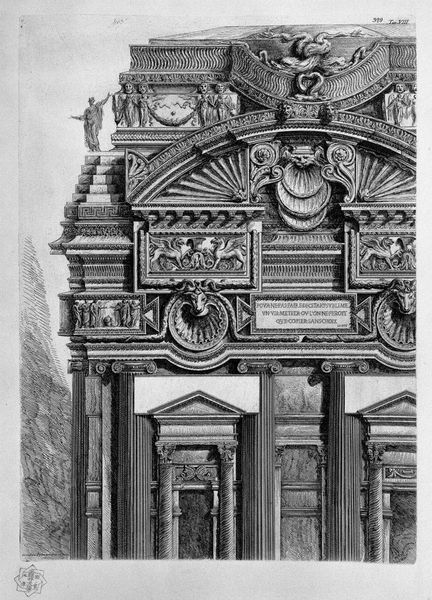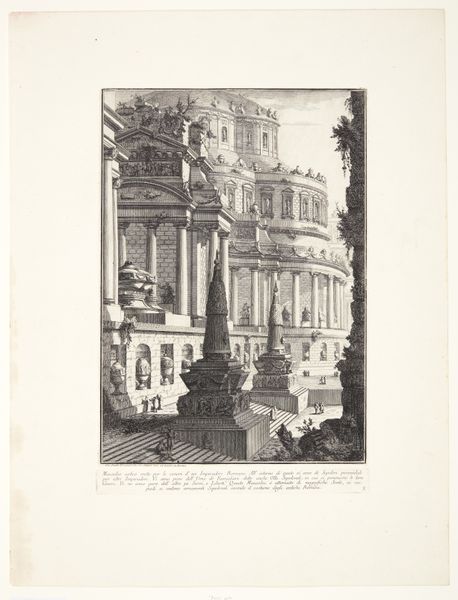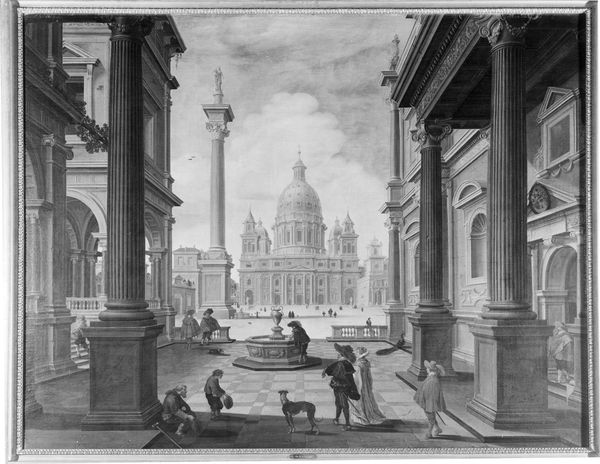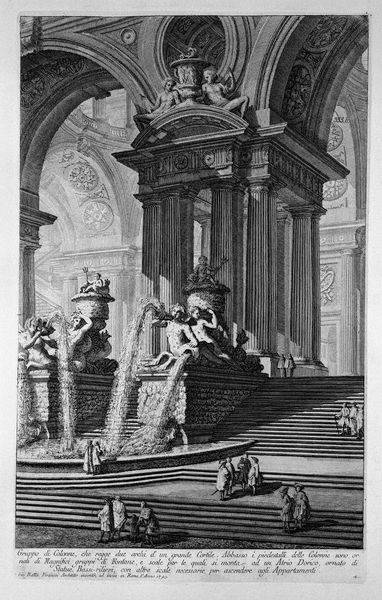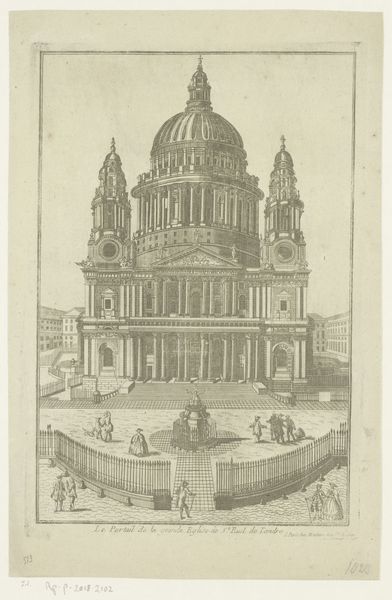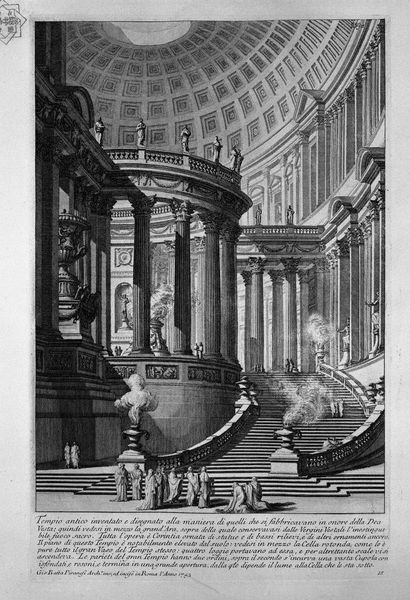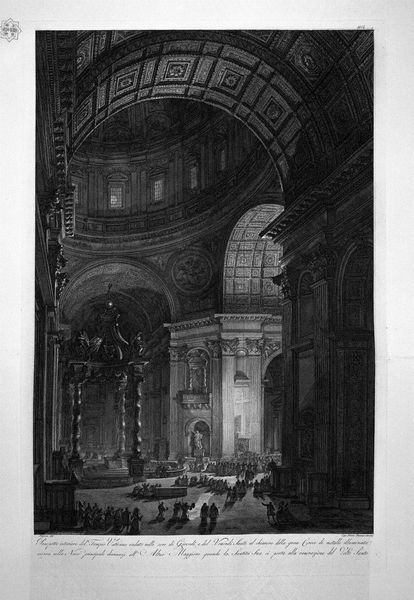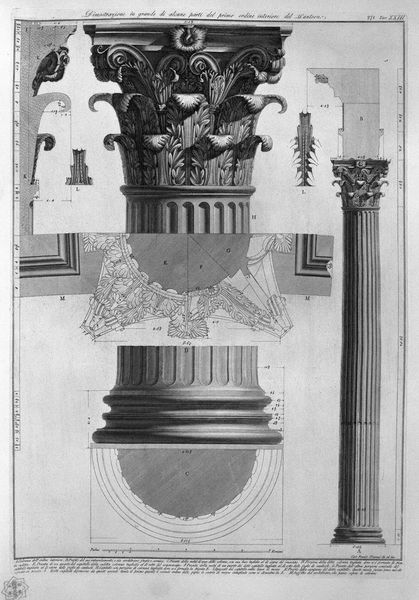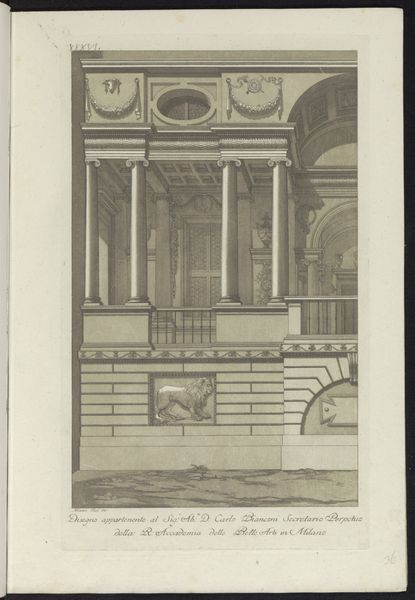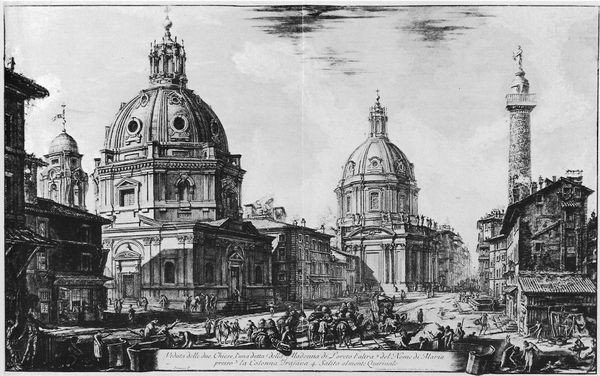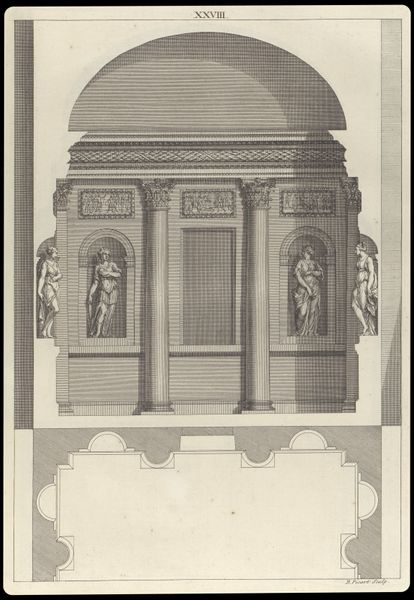
print, engraving, architecture
# print
#
old engraving style
#
classical-realism
#
romanesque
#
highly detailed
#
geometric
#
ancient-mediterranean
#
men
#
line
#
pen work
#
cityscape
#
history-painting
#
engraving
#
architecture
#
intricate and detailed
Copyright: Public domain
Curator: Let's turn our attention to this 1750 engraving by Giovanni Battista Piranesi, titled "Ancient mausoleum erected to the ashes of a Roman Emperor." Editor: It’s grand, almost oppressively so. The sheer weight of those architectural forms, all rendered in such exacting detail…it’s both impressive and a little unsettling. Curator: Piranesi was known for his dramatic, often exaggerated, depictions of Roman architecture. He created these fantastical scenes that really fueled the 18th-century fascination with classical antiquity, playing a significant role in shaping the public's imagination of ancient Rome. Editor: Right, but look closer. The textures, the linework... It’s more than just documentation. See how the light falls across the stone, creating depth? And all those tiny figures – what material did he use to get that detail? Curator: Piranesi used a combination of etching and engraving to achieve that level of detail. This print would have circulated widely, influencing architectural styles and ideas about empire. Editor: I see the power dynamic. It is there in the means of reproduction too, enabling the masses access the vision of Roman splendor while reminding them of their access limitations due to the Emperor’s influence and control over materials. Even in its decay, this space has an air of exclusion to it, like someone of power designed and produced it. Curator: Indeed, and this points to how architecture becomes a tool for political and social commentary. Piranesi wasn’t simply recording history; he was actively participating in shaping its narrative through these printed images. The politics of imagery matter just as much as the accuracy. Editor: It all loops back to the production: how the material reality of the artwork reinforces and complicates its message. By meticulously detailing these grand spaces, Piranesi inadvertently emphasized both the achievements and the social imbalances of power inherent in their construction. Curator: That is an important consideration when analyzing how we see and interpret architectural ruins today. Editor: Exactly. It reveals layers of production, social standing and authority all at once, wouldn't you say?
Comments
No comments
Be the first to comment and join the conversation on the ultimate creative platform.

